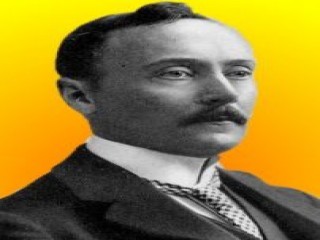
William Duddell biography
Date of birth : 1872-07-01
Date of death : 1917-11-04
Birthplace : London, England
Nationality : English
Category : Arhitecture and Engineering
Last modified : 2011-09-29
Credited as : electrical engineer, physicist, moving coil oscillograph
0 votes so far
Joubert's method of measuring an alternating voltage was to use a potentiometer bridge and balance a series of phases of of a period of the current variations against a standard cell.
For the same purpose, Duddell devised a galvanometer sensitive and responsive enough to display the variations as a curve outlined by a moving light spot. The light trace displayed by this galvanometer could also be photographed. Combining a talent for invention with a delicate skill as a workman, he gained recognition as a designer of specialized scientific instruments.
With Professor Marchant, he investigated the resistance of an electric carbon arc lamp in a circuit by measuring the ratio of the voltage to the current. Such lights had the side effect of producing a noise that could vary from a low hum to an annoying high-pitched whistle. By 1899, Duddell created the Singing Arc as a musical novelty for his lectures. The effect was based on varying the voltage to applied to a carbon arc lamp, resulting in oscillations producing an audible tone controlled from a keyboard.
Danish engineer Valdemar Poulsen modified this principle (1902) with specially designed equipment to generate continuous waves for wireless telegraphy at frequencies above a human's hearing range. This early contribution to radio was adapted in the valve-type transmitter.
Because Duddell had both the knowledge as an electrical engineer and the skill to give clear but simple technical explanations, he was effective as an expert witness in court trials resolving technological disputes.
In 1912, he was elected Fellow of the Royal Society. While still only 40 years old, he became the then youngest President of the Institution of Electrical Engineers and served two one-year terms (1912 and 1913).
He died on 4 November 1917 at the age of only 45, having spent the final three years of his life engaged in secret research for the U.S. government.
Physicist William Duddell invented electronic music in 1899, quite by accident, when he was trying to quiet the constant sizzling sound made by carbon arc lights. A predecessor to Thomas Edison's light bulb, arc lights created a constant spark between two carbon nodes, but also made an annoying noise. Duddell was unable to eliminate the sound, but his experiments showed that by improving control of the electric current, he could control the tones generated. Manipulating the oscillations by wiring the arc lights to a keyboard, he invented what may have been the first electronic musical instrument, colloquially dubbed the "singing arc". He used the singing arc as a novelty in his lectures, but never patented the device.
Essentially self-taught, Duddell apprenticed in his teens at an early electronics shop. He taught at City and Guilds Institute, and had several other important inventions, including a moving coil oscillograph (for observation and recording oscillating audio frequency waveforms), a thermo-galvanometer (for measuring extremely low currents), and a magnetic standard (for calibrating ballistic galvanometers). He spent the last three years of his life engaged in secret research for the U.S. government, and died at the age of 45. He is the namesake of the Duddell Medal, awarded by England's Institute of Physics for contributions to the advancement of knowledge through physics.
















